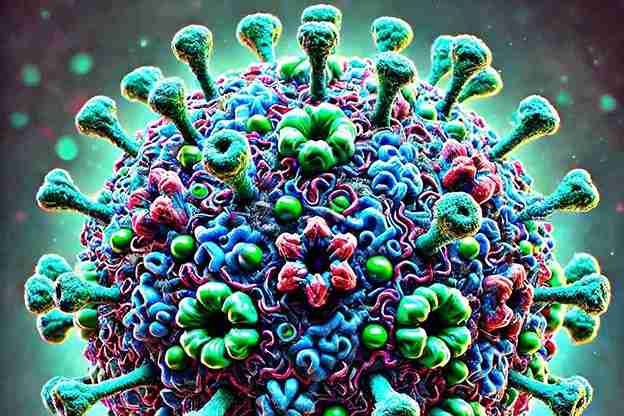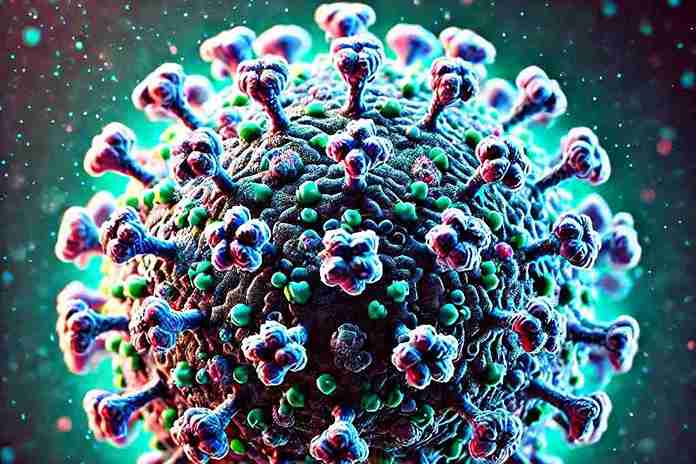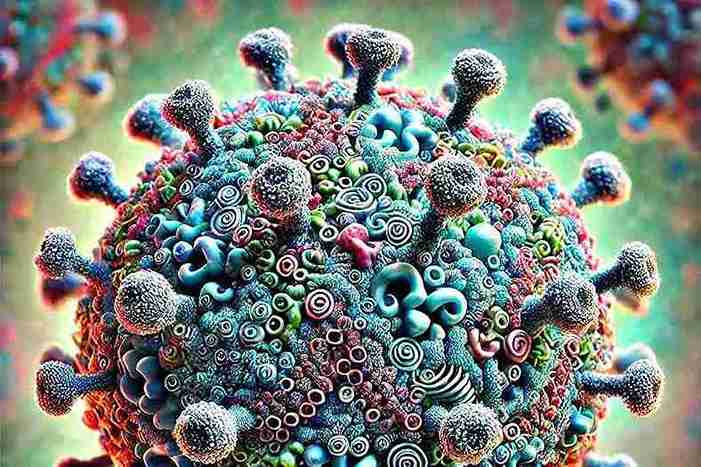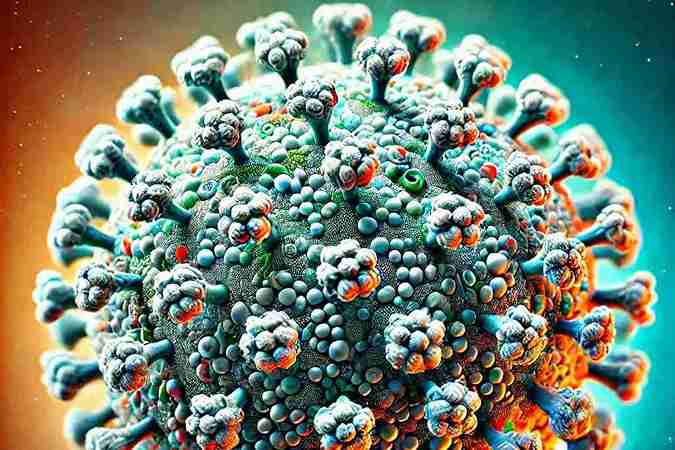Table of Contents
Human Metapneumovirus (HMPV) is a respiratory virus that primarily affects the upper and lower respiratory tract, causing symptoms similar to the common cold, but in some cases, it can lead to more severe illnesses, such as pneumonia or exacerbations of chronic lung diseases like asthma or chronic obstructive pulmonary disease (COPD). Recently, there has been a surge in HMPV cases in certain regions, including northern China, with particular concern over its impact on children and the elderly. While it is important to be vigilant about respiratory viruses, it is crucial to understand the virus, its symptoms, how to treat it, and the best prevention strategies.
In this article, we will explore HMPV in-depth, including its symptoms, treatment options, risk factors, and prevention tips, while also addressing common concerns about its potential severity, especially in light of its increasing cases in recent times.
What is Human Metapneumovirus (HMPV)?

Human Metapneumovirus (HMPV) is a member of the Pneumoviridae family, which also includes the well-known respiratory syncytial virus (RSV). It was first identified in 2001 by researchers who isolated it from respiratory samples taken from patients with symptoms of lower respiratory tract infections. Since its discovery, HMPV has been recognized as a significant cause of respiratory illness, particularly in young children, older adults, and individuals with weakened immune systems.
HMPV primarily affects the respiratory system, leading to infections in the nose, throat, bronchi, and lungs. It is most commonly seen during the winter and early spring months, similar to other respiratory viruses such as influenza and RSV.
How Does HMPV Spread?
HMPV is a highly contagious virus, primarily spread through respiratory droplets when an infected person coughs, sneezes, or talks. It can also spread by touching surfaces contaminated with the virus and then touching the face, mouth, or eyes.
Given its mode of transmission, it is common for HMPV to spread in crowded environments, such as schools, daycare centers, and healthcare facilities. Children, in particular, are at higher risk of contracting the virus, as they have less developed immune systems and are often in close contact with others.
Symptoms of Human Metapneumovirus (HMPV)

The symptoms of HMPV can vary depending on the severity of the infection and the individual’s health condition. In general, HMPV causes mild to moderate respiratory symptoms that resemble those of a common cold. However, in some cases, the virus can cause more severe respiratory issues, especially in people with pre-existing lung conditions or weakened immune systems.
Common Symptoms of HMPV
- Coughing: One of the hallmark symptoms of HMPV is a persistent cough, which can range from dry to productive.
- Runny Nose and Nasal Congestion: Like many respiratory viruses, HMPV can cause a stuffy nose and excessive mucus production.
- Sore Throat: A sore throat may occur, especially in the early stages of the infection.
- Fever: Mild to moderate fever is common with HMPV infections, although not everyone with the virus will develop a fever.
- Sneezing: Frequent sneezing can accompany the infection.
- Fatigue and Malaise: Patients often report feeling fatigued or generally unwell, similar to the feeling that accompanies a cold or flu.
- Shortness of Breath: In more severe cases, HMPV can affect the lungs, leading to shortness of breath or difficulty breathing.
- Wheezing: HMPV may trigger wheezing, particularly in individuals with asthma or other respiratory conditions.
Severe Symptoms and Complications
While most HMPV infections are mild, certain individuals may develop more serious respiratory conditions. Children, the elderly, and people with chronic lung diseases (like asthma, COPD, or cystic fibrosis) are at higher risk of developing complications. In these individuals, Human Metapneumovirus infection can lead to:
- Pneumonia: In some cases, HMPV can cause pneumonia, a potentially life-threatening condition where the lungs become inflamed, and breathing becomes difficult.
- Bronchiolitis: This is an inflammation of the small airways in the lungs, which is particularly common in infants and young children.
- Exacerbation of Asthma: For people with asthma, Human Metapneumovirus can trigger flare-ups, leading to increased symptoms and potential hospitalization.
- Worsening of Chronic Obstructive Pulmonary Disease (COPD): HMPV infections can aggravate the symptoms of COPD, resulting in more frequent and severe breathing difficulties.
HMPV in Children
Children, especially those under the age of 5, are more susceptible to severe infections caused by HMPV. They may experience respiratory distress, including wheezing, labored breathing, and even the need for oxygen therapy in severe cases. In fact, studies have shown that HMPV is a significant cause of bronchiolitis and pneumonia in young children, often requiring hospitalization.
HMPV in Older Adults
Older adults, particularly those over the age of 65, may also experience more severe symptoms due to a weakened immune system. In this age group, HMPV infections can lead to pneumonia, acute respiratory failure, and prolonged illness. People with underlying health conditions, such as heart disease or diabetes, are also at higher risk for complications.
Treatment of HMPV

Currently, there is no specific antiviral treatment available for Human Metapneumovirus infections. Like many respiratory viruses, the management of HMPV primarily focuses on alleviating symptoms and supporting the patient’s immune system as it fights the infection.
Symptomatic Treatment
- Rest and Hydration: Getting plenty of rest and staying hydrated are essential for supporting the immune system and recovering from the infection. Drinking fluids helps keep mucus thin and easier to expel.
- Over-the-Counter Medications: Over-the-counter (OTC) medications like acetaminophen (Tylenol) or ibuprofen (Advil) can help reduce fever, body aches, and discomfort associated with HMPV infections.
- Cough Suppressants and Expectorants: For those with a persistent cough, OTC medications such as cough suppressants or expectorants may provide relief. However, it is important to consult with a healthcare provider before using these, especially in children.
- Nasal Decongestants: Decongestants can help alleviate nasal congestion and ease breathing. Again, these should be used cautiously, particularly in children and older adults.
Hospitalization and Supportive Care
For individuals with severe symptoms, hospitalization may be necessary. This is especially true for young children, the elderly, and people with underlying health conditions. Supportive care in a hospital setting may include:
- Oxygen Therapy: To help patients who are having difficulty breathing.
- Nebulized Treatments: In some cases, nebulized bronchodilators or corticosteroids may be used to help open the airways and reduce inflammation.
- Mechanical Ventilation: In severe cases, patients with respiratory failure may need mechanical ventilation to assist with breathing.
Prevention of HMPV
Since there is no specific vaccine for HMPV, prevention primarily revolves around minimizing exposure to the virus and practicing good hygiene.
Key Preventative Measures
- Frequent Handwashing: Regular handwashing with soap and water for at least 20 seconds can help prevent the spread of respiratory viruses. Alcohol-based hand sanitizers are also effective when soap and water are not available.
- Covering Coughs and Sneezes: Always cover your mouth and nose with a tissue or elbow when coughing or sneezing to prevent the spread of respiratory droplets.
- Avoid Close Contact with Sick Individuals: Avoid close contact with individuals who are exhibiting symptoms of a cold or respiratory infection, especially in crowded places like schools or healthcare facilities.
- Disinfecting Surfaces: Regularly clean and disinfect surfaces that are frequently touched, such as doorknobs, light switches, and cell phones, to reduce the risk of spreading germs.
- Staying Home When Sick: If you or your child is sick, stay home to prevent spreading the infection to others, particularly those at high risk, such as young children, the elderly, or people with chronic health conditions.
Conclusion
Human Metapneumovirus is a contagious respiratory virus that causes symptoms similar to the common cold, but can sometimes lead to more severe respiratory illnesses, particularly in young children, the elderly, and individuals with pre-existing lung conditions. While there is no specific antiviral treatment for HMPV, symptomatic care can help manage the symptoms. Preventive measures, such as good hygiene and avoiding close contact with infected individuals, remain the best way to reduce the risk of transmission.
Given the recent surge in cases, particularly among children in northern China, it is important for communities and healthcare providers to remain vigilant. By understanding the virus, its symptoms, and the best prevention practices, we can help mitigate its spread and ensure better health outcomes for those affected.

